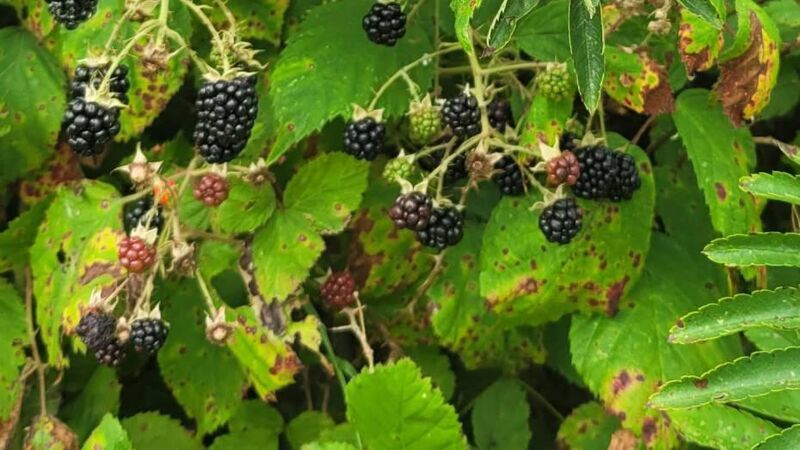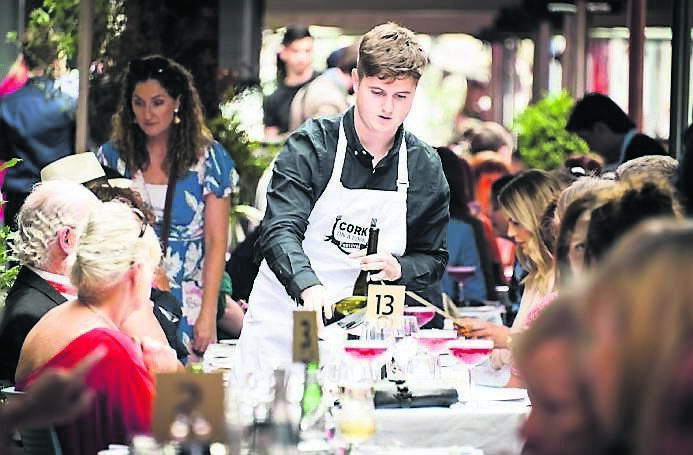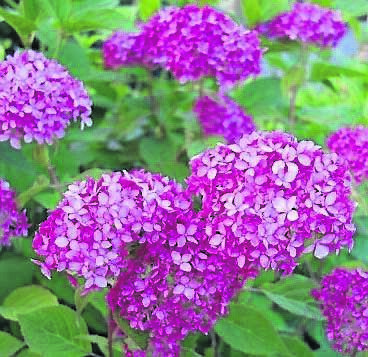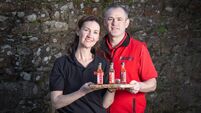In the Garden: Trim hedges now and pick berries too

Our hedgerows are beginning to look bountiful right now
THE dull and wet weather continues, with an occasional sunny day to whet our appetites, and while it is disappointing for the last month of the summer holidays, the garden is doing well and plants are glad of the moisture, although they could do with a little less wind.
A windy day in high summer can do lots of damage, with supports under pressure because of the weight of crops or flowers to contend with - a reminder that supports can never be over-engineered!
When plants are in full leaf, the wind has more to play with and so can do more damage. My hazel stakes for beans will have to be reinforced for next year, that is for sure.
Garden hedges are in need of an annual trim as growth begins to slow down, and we can be sure that a second trim will not be required if we proceed now.
It’s a very satisfying job, as it brings some defined structure back to the garden after a summer of growth.
Hedges are an important element in the garden, providing screening, shelter, structure, and habitat all year round. They act as wildlife corridors that enable small creatures to move from different areas under cover.
Hedges also provide nesting sites for birds and it is best to leave trimming until as late as possible so that baby birds have fledged the nest. They are home also to plenty of insects, with some hedging types supporting more in the way of native invertebrates than others.
Using native species like hazel, holly, whitethorn, blackthorn, guelder rose or spindle will provide better homes for our native species of insect, bird and mammal. Including a mix of different species to create a hedge can be a great way of increasing biodiversity.
The blackberries are appearing in the hedgerows much earlier this year as a result of the good weather earlier in the summer. Finding a south/east facing sheltered corner is going to be the most likely aspect for their early formation, and picking them on a dry day will result in the best quality fruit.
Freezing these little orbs of sweetness will help to preserve the taste of late summer for use in porridge or deserts well into the months ahead. They are a good source of vitamin C, E and folic acid and a good source of fibre. All growing wild and for free in our native hedgerows.
Do try to pick from areas off the road if possible to avoid pollution from dust, traffic and pets.
When harvesting blackberries, all of the other bounty in the hedgerows becomes noticeable, particularly the haws on the hawthorn, berries on the mountain ash, sloes on the blackthorn, and the ivy starting to flower.
It appears that most fruit is ripening early this season as a result of higher temperatures early in the summer, and dry weather, which triggered plants to get going quickly in producing the potential next generation.
Meanwhile, hydrangeas are making a splash again this August after taking a hit in many parts last year due to a lack of water over the summer.
Now is a good time to take some semi-ripe cuttings from non-flowering shoots, and these should root well during this growing season and be ready for planting out in the springtime.
The lace cap and paniculate types of hydrangea are better for pollinators than the mop heads. The flowers of mop heads are sterile and bear no nectar or pollen for flying insects.
It is interesting to observe what plants attract most attention from hover flies, honey bees and bumble bees in the garden. Geranium ‘Rozanne’, for example, also has sterile flowers, which makes it such a long flowering plant, however its flowers are nectar/pollen rich making it a very attractive plant for pollinators. It is always covered in bees on a sunny day.
The wet and overcast weather of the last few weeks has made it a difficult summer for honey bees that had gotten off to a flying start, with the end of May and a lot of June providing dry and sunny weather more favourable for the collection of nectar and pollen, resulting in honey production.

SUPPORT LOCAL FOOD INITIATIVES
August is a month when there are festivals on every weekend throughout the country, as we all make the most of the summer break.
This year is no exception, and this week there is a five-day food festival taking place in Cork. ‘Cork on a Fork Festival’ is running from August 16-20 and is a celebration of Cork city’s ever evolving dining and nightlife scene.
Supporting local food initiatives has never been so important, and this event highlights all that is good and great in different parts of the city.
There are many community garden events happening today throughout the city and all of them are free.
Talks and workshops are running over the five days, from pizza making to cocktail classes, check out www.corkonaforkfest.ie for more details of events happening near you this weekend.

Plant of the Week
As we reach the middle of August, it is always good to have a few good, late flowering shrubs to keep colour going in the garden when some of the herbaceous plants are fading a bit.
Hydrangea arborescens ‘Ruby Annabelle’, pictured above, bears large clusters of red/pink blooms, as the name suggests. It has a compact growing habit, getting to about 1.2 metres in height and spread, and will do best planted in full sun or partial shade in a moist but well drained soil.
Flowering from July into the autumn months, this is a late summer gem for the garden.







 App?
App?


